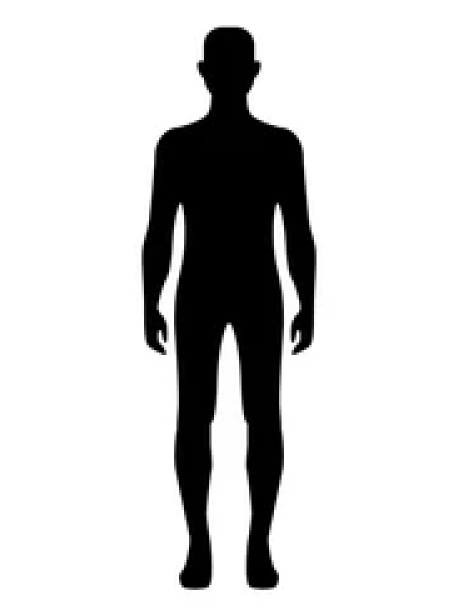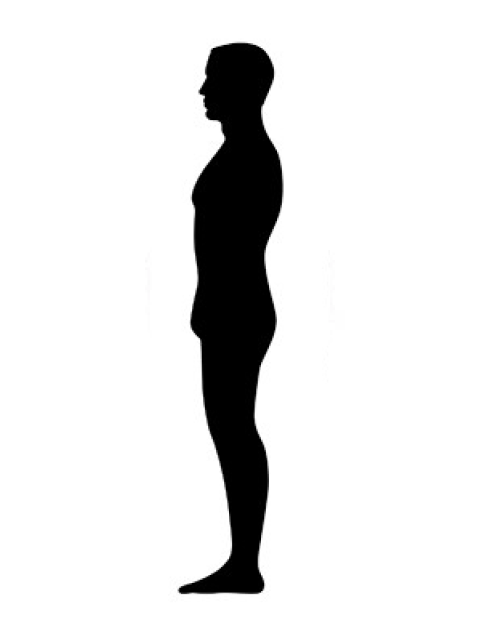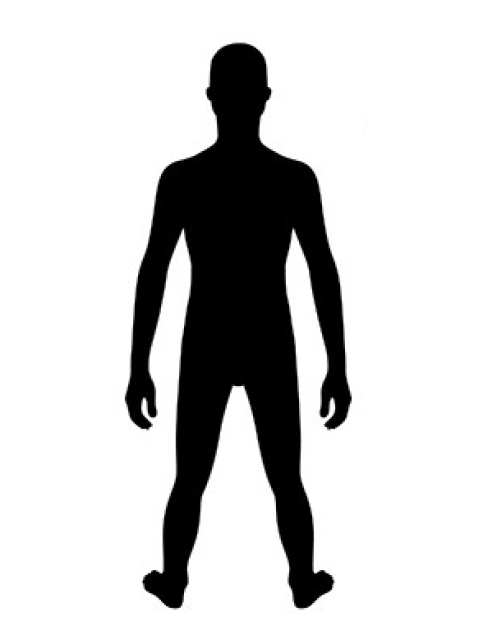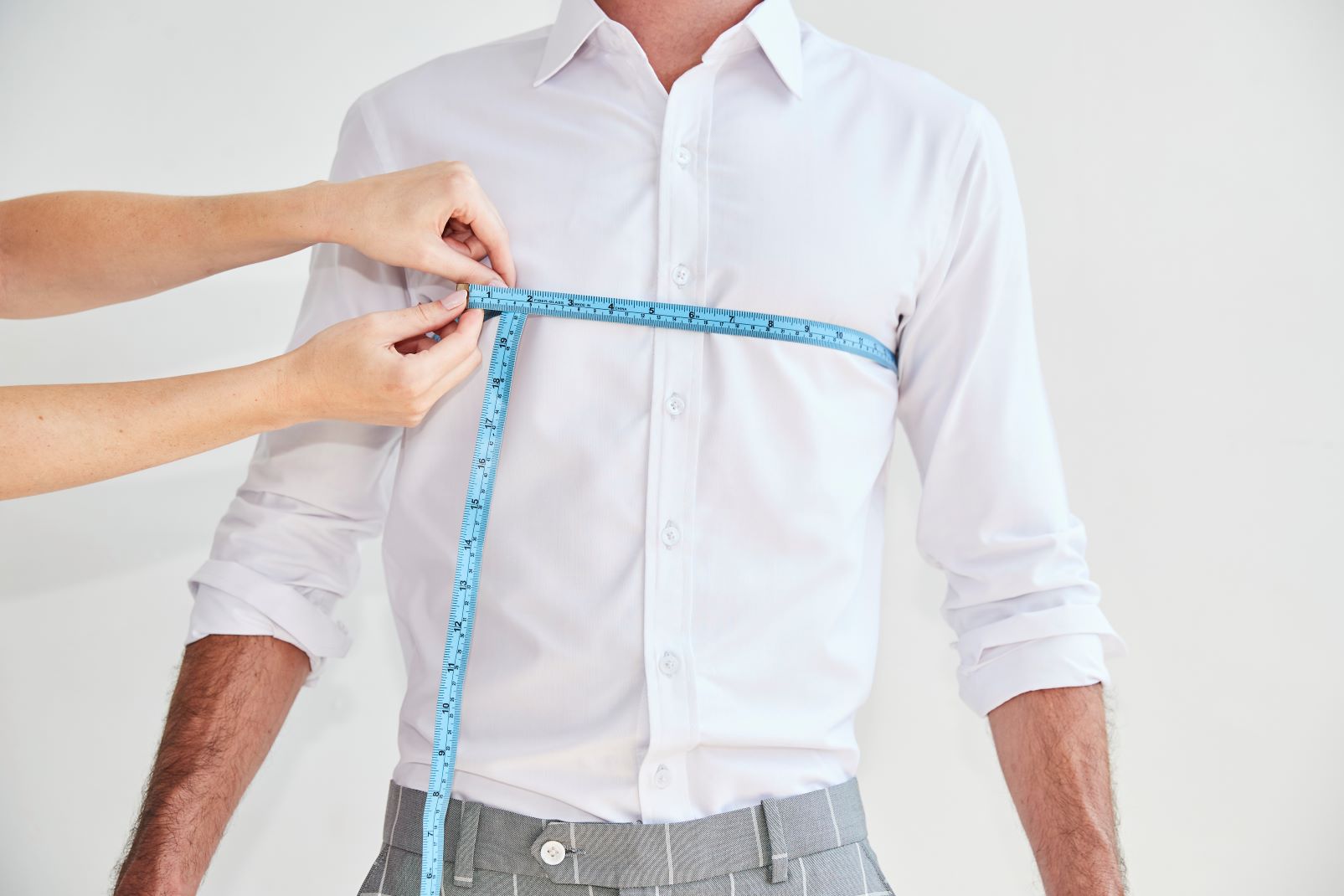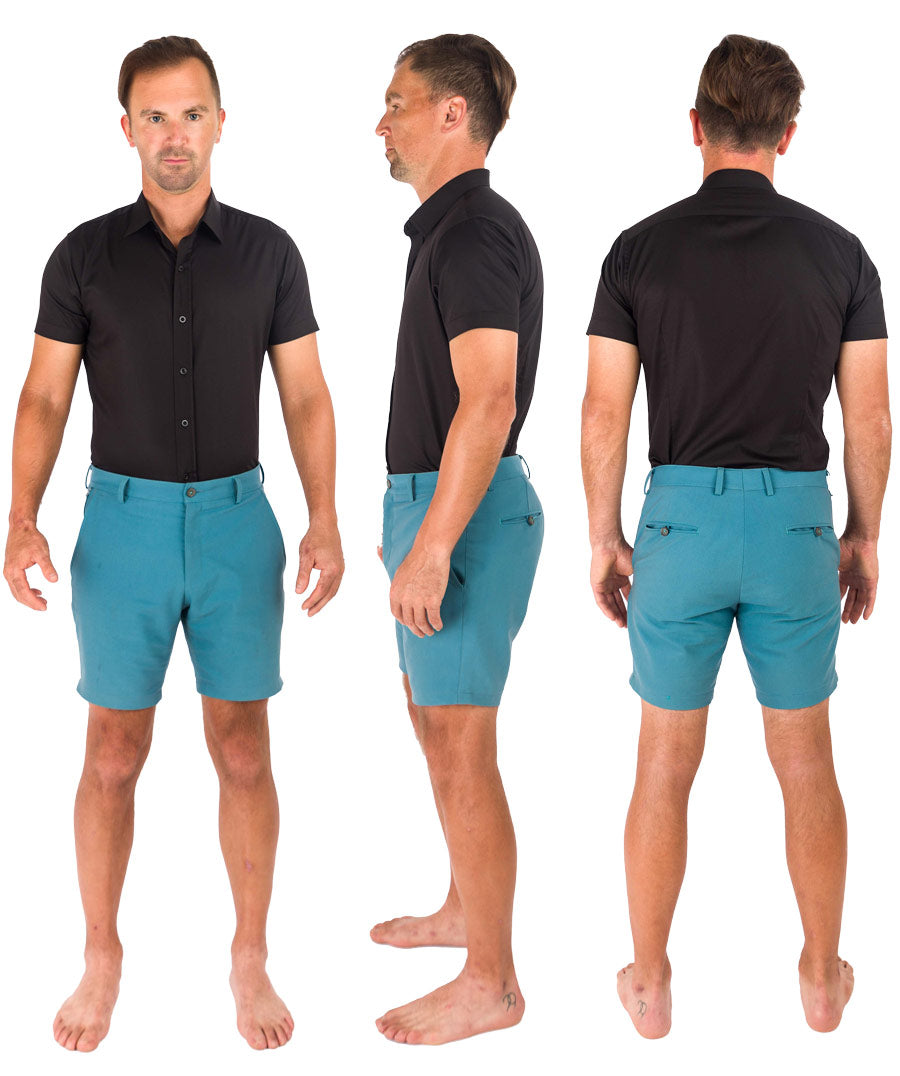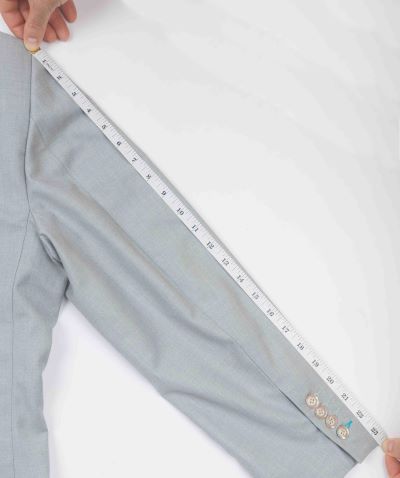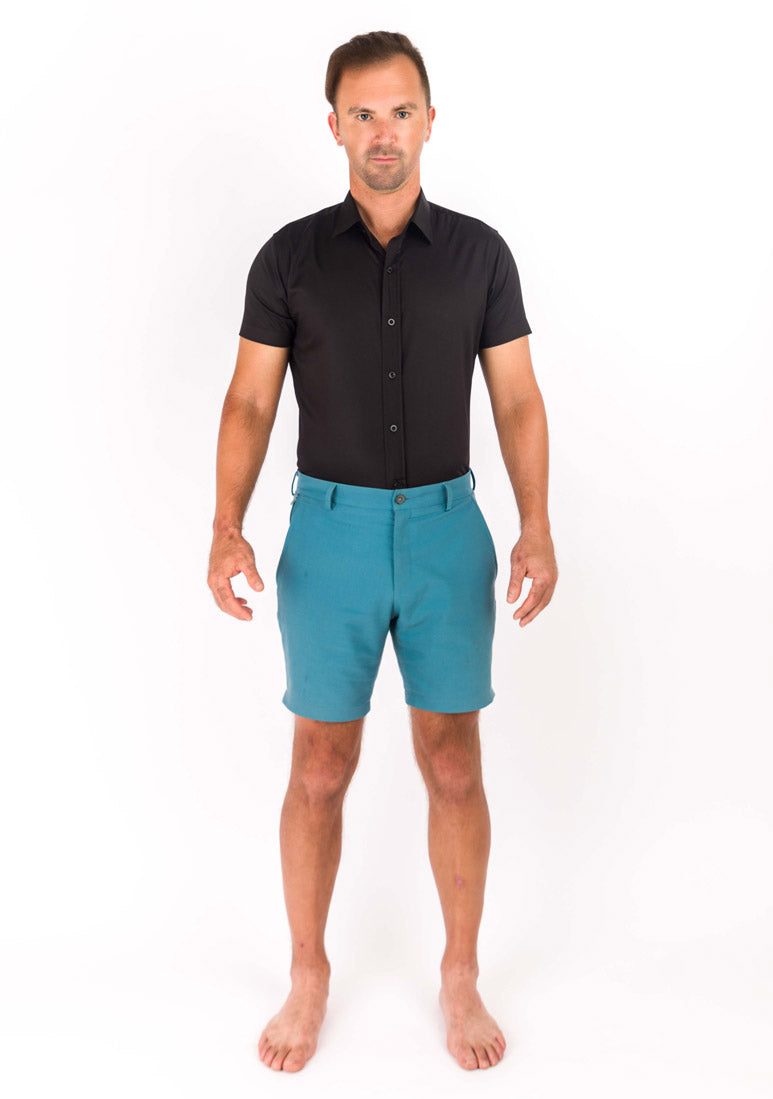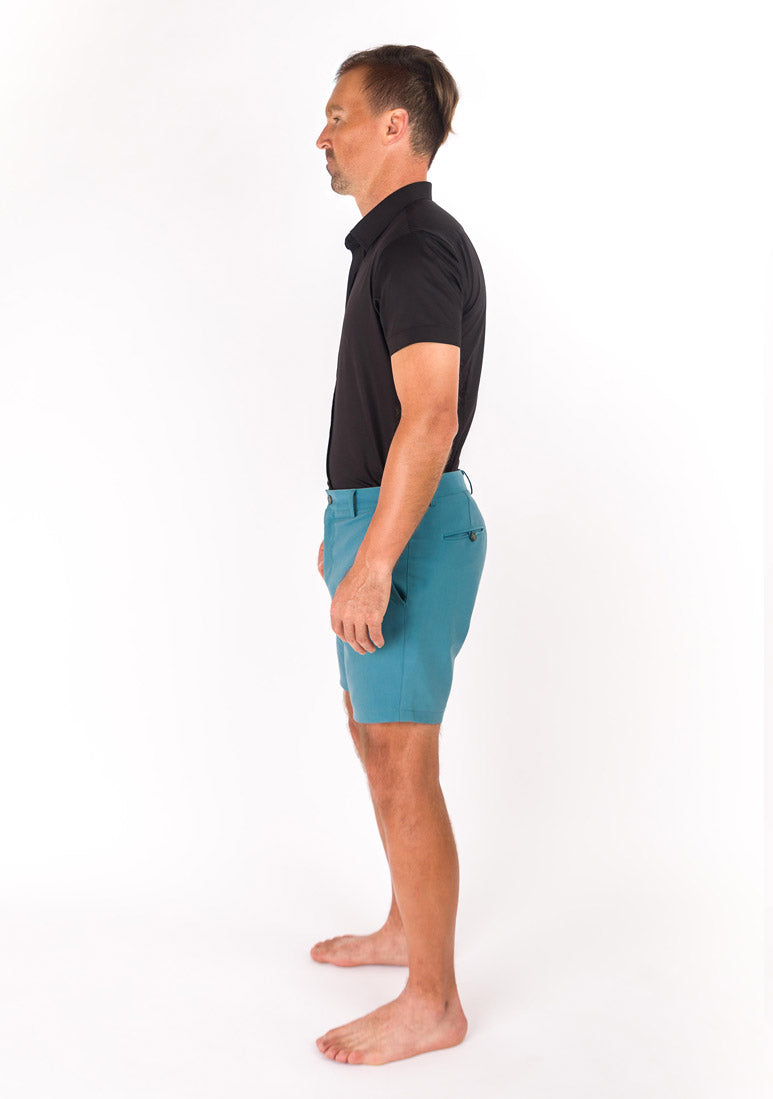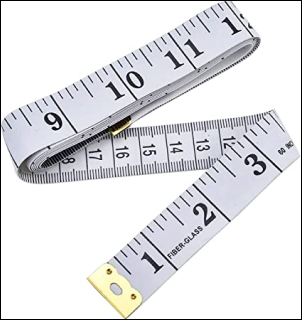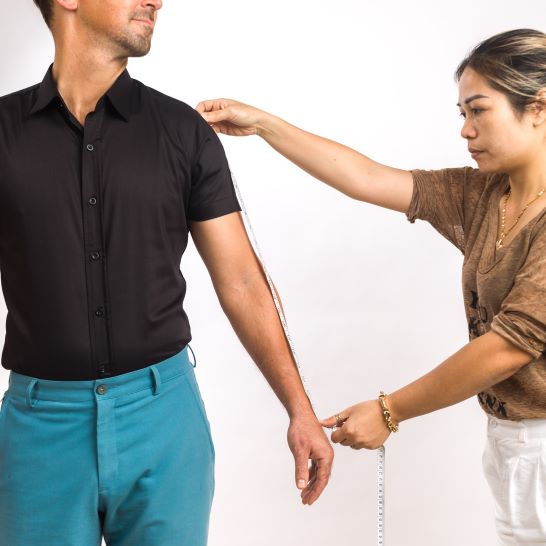The Ultimate Guide To Suit Jacket Sizing

Key Takeaways:
- Nail the Fit with Proper Sizing: Suit jacket sizing is foundational to comfort, confidence, and style—mastering chest, shoulder, and sleeve measurements ensures your jacket flatters and fits perfectly.
- Choose the Right Fit Type & Length: Fit types and jacket lengths (Short, Regular, Long) impact both silhouette and presence—choosing the right combo defines your personal style.
- Easy Measuring or Instant Custom Fit: Measuring at home is easy and accurate—or use Sartoro’s Digital Tailor to skip measuring entirely and get custom-fit results in under 3 minutes.
Getting the right size in a suit jacket shouldn’t feel like decoding a secret language, but too often, it does. You know when something fits wrong: the shoulders pull, the sleeves bunch, or the whole thing just feels… off. And if you're investing in a suit jacket that’s supposed to work hard for you—from boardroom moves to big nights out—it should feel effortless the moment you put it on.
At Sartoro, we don’t believe in one-size-fits-most. Our approach is personal, precise, and designed to ensure your suit jacket doesn’t just fit—it fits you. This guide breaks down everything you need to know about suit jacket sizing: how to read a size chart, how to measure yourself accurately, and what to look for when it comes to a flawless fit.
Why Suit Jacket Sizing Matters More Than You Think
The right suit jacket doesn’t just fit—it transforms. Precision in sizing is the key ingredient that elevates a jacket from simple attire to a mark of unmistakable confidence and distinction. In the world of tailored clothing, every measurement tells a story, and your jacket should express yours with authority and style. Here’s why sizing is more than numbers on a tag.
The Foundation Of Exceptional Fit
A flawless fit is the anchor of any truly remarkable suit. When a jacket sits perfectly on your shoulders, hugs your chest without restricting movement, and glides over your torso, it projects polish and power.
Conversely, poor sizing can undermine even the most luxurious fabrics, leaving you feeling uncomfortable and out of place. Nothing conveys self-assurance like a jacket that moves with you, accentuating your physique and style.
Comfort Without Compromise
Beyond first impressions, proper sizing unlocks true comfort. Every inch matters: sleeves that graze your wrists just so, a collar that lies flat without pulling, and a length that balances your frame. The difference is tangible—hours spent at the office, a wedding, or a night on the town become effortless when your jacket feels as good as it looks. With ideal sizing, style and comfort become inseparable.
The Role Of Personal Expression
Men’s suit jackets are no longer a one-size-fits-all proposition. Men of all body types, tastes, and personal styles deserve options to celebrate their identity. Accurate sizing paves the way for meaningful customization, whether that means a classic silhouette or a contemporary cut. True sartorial freedom starts with garments made to your unique profile, empowering you to express individuality confidently.
Setting The Stage For Guaranteed Satisfaction
It’s impossible to overstate: a properly sized suit jacket is the cornerstone of guaranteed style satisfaction. Meticulous sizing ensures that when you slip on your jacket, your expectations aren’t just met—they’re exceeded. With each precise measurement, you step closer to a wardrobe that doesn’t just fit, but fits you, and only you.
Breaking Down Suit Jacket Size Chart
Selecting a suit jacket that embodies comfort and panache starts with understanding sizing. A suit jacket size chart is more than just numbers and letters—it's your roadmap to a fit that flatters your frame and sets you apart in any setting. Let’s decode each component to elevate your tailoring experience.
Deciphering Jacket Numbers (Chest Size)
The primary number on a suit jacket label, such as 40 or 44, refers to your chest circumference in inches. This measurement anchors the fit, ensuring the jacket contours your torso without constriction or excess fabric. Precise chest sizing means arm movement feels effortless and the jacket’s silhouette is crisp, never boxy or strained.
Understanding Jacket Lengths (Short, Regular, Long)
Paired with the chest measurement, jacket lengths—labeled as S (Short), R (Regular), L (Long), and sometimes XL (Extra Long)—accommodate different heights. The right length helps maintain visual proportion, with the jacket falling mid-palm when arms are at your sides, and the rear covering your seat for an elegant, commanding presence.
Shoulder And Sleeve Considerations
Beyond numbers, subtle variations in shoulder width and sleeve length define the jacket’s overall sophistication. Shoulders should lie flat, aligning perfectly with your natural shoulder bones, while sleeves end just above the wrist bone, offering a sliver of shirt cuff. Proper alignment in these details guarantees your jacket looks tailored, even if taken straight from the size chart.
Navigating Fits: Classic, Slim, And Modern
Most size charts distinguish between fit profiles:
- Classic Fit offers ample room through the chest and waist for a traditional, relaxed feel.
- Slim Fit contours closer to the body, promoting a sharp, contemporary silhouette.
- Modern Fit strikes a balance—trim without being restrictive, suitable for various builds.
Understanding these fit terms empowers you to select the cut that best expresses your individuality while ensuring lasting comfort. Whether you gravitate toward a crisp blue suit jacket or prefer a more formal black suit jacket, or something more traditional, the right fit enhances comfort and style.
Chest, Shoulder, Sleeve: What You Really Need To Measure
When it comes to the art of mastering suit jacket sizing, three essential measurements dictate the balance between comfort, sharpness, and personal style: chest, shoulders, and sleeves. Getting these right is the difference between a jacket that simply covers you and a garment that lets you own every room you enter. Here’s how each dimension shapes your finished look.
Chest: The Foundation Of Fit
The chest measurement is the cornerstone of any suit jacket, providing the template for how your coat will drape. Wrap measuring tape around the fullest part of your chest, under your arms, and across your shoulder blades, ensuring the tape stays level and neither too loose nor too restrictive.
A precise chest measurement guarantees enough room for supple movement without sacrificing the clean, tailored lines essential to a luxury fit. This number often becomes your starting point on any suit jacket size chart.
Shoulders: Framing Your Silhouette
The shoulder measurement determines your jacket’s structure—too wide, and the silhouette droops; too narrow, and mobility suffers. Position the tape from edge to edge across the top of your shoulders, marking the bone where your natural shoulder ends. The right shoulder fit sits comfortably, creating a seamless transition from chest to sleeve, and exudes an unmistakable confidence emblematic of premium tailoring.
Sleeve: Precision Meets Comfort
Sleeve length is where individuality and utility converge. Measure from the tip of your shoulder down to your wrist bone, with your arm relaxed at your side. The ideal jacket sleeve should reveal just a hint of shirt cuff, signaling attention to detail and an appreciation for refined craftsmanship. Too long or too short, and the whole ensemble falters—get this right, and your jacket radiates effortless elegance.
How To Measure For A Suit Jacket At Home (Step-By-Step)
Getting the perfect fit doesn’t mean booking a tailor or stepping into a showroom. All you really need is a soft measuring tape—and a friend with a steady hand. Measuring yourself at home is fast, easy, and surprisingly precise when you follow the right steps.
Gather Your Tools
Start with a flexible tape measure, something to jot down your numbers, and—if possible—a friend to help keep things straight (mirrors work in a pinch, too).
Wear The Right Clothing
Wear a fitted shirt or a thin tee—nothing bulky. A clean base helps you get measurements that reflect your frame, not the fabric on top of it.
Measure Your Chest
Stand relaxed, arms at your sides. Have your friend wrap the tape around the fullest part of your chest, just under your arms. The tape should be snug but not tight, parallel to the floor. Breathe normally.
Record Your Shoulder Width
Ask your friend to measure from the edge of one shoulder to the other, straight across your back. This will define how your jacket will sit—and move—with you.
Measure Your Sleeve Length
Keep your arm slightly bent. Starting at the edge of your shoulder, measure down along the outside of your arm to just past your wrist. This gives you the ideal sleeve drop for comfort and proportion.
Check Your Jacket Length
From the top of your shoulder (near the base of your neck), measure down to where you want the jacket to end—usually mid-palm when your arms are at rest. This length keeps your silhouette balanced and sharp.
Note Your Waist
Wrap the tape around your natural waist, just above your hips and below your ribs. This step ensures your jacket creates a tailored, flattering shape without being restrictive.
Prefer to skip the tape? Sartoro’s Digital Tailor gets your fit dialed in using just a few questions—no measuring required. Ready in under 3 minutes, no friend needed.
Regular, Short, Or Long? Choosing The Right Jacket Length
Here’s how to determine whether a regular, short, or long length suits your frame and personal style best.
Understanding Jacket Length Options
Jacket length, typically denoted as Short (S), Regular (R), or Long (L), refers to the measurement from the top of the shoulder down to the hem. This impacts not only the visual proportion of your suit but also how comfortable and confident you feel when wearing it.
- Short (S): Designed for men on the shorter or more compact side (typically under 5’8”). A short jacket ensures that your silhouette isn’t overwhelmed by excess fabric, providing a clean, modern line.
- Regular (R): Geared toward those with average height (generally 5’8” to 6’0”). The regular length maintains classic proportions, striking a careful balance between formality and contemporary style.
- Long (L): Cut for taller individuals (over 6’0”). This length offers extra coverage and helps balance out the visual length of the torso and legs, producing a harmonious, elongated silhouette.
Assessing Your Fit: Easy At-Home Methods
To determine which jacket length is right for you, start by standing naturally with your arms relaxed. The hem of a well-fitting jacket should end around the middle of your palm or just below the curve of your seat. Watching how the jacket aligns with your body—rather than simply measuring by height—allows for subtle adjustments based on personal taste and posture.
Impact On Style And Presence
Selecting the optimal jacket length does more than ensure comfort: it’s fundamental to capturing your individual style. A jacket that’s too short can look modern but risks appearing trendy or ill-fitting if not balanced properly. Conversely, an overly long jacket may seem traditional but can detract from a sharp, contemporary image. Striking the right balance ensures each detail reflects an aura of confidence, distinguishing your presence in any room.
Common Suit Fit Problems And How To Fix Them
Finding the perfect suit often encounters familiar hurdles—even the most discerning gentleman can run into fit issues. Understanding these common problems and knowing how to address them is essential to achieving that sharp, confident look worthy of any boardroom or black-tie affair.
The Shoulder Squeeze
A suit’s shoulders set its overall structure. If the shoulders are too snug, you’ll notice restriction in arm movement or unsightly pulling across the back. Conversely, excess fabric or “shoulder divots” signal a fit that’s too loose. To correct this, always prioritize shoulder fit above all—it’s the hardest area to tailor. Measure your natural shoulders and ensure your jacket’s shoulder seam rests cleanly on top. If you’re between sizes, opt for a slightly larger shoulder that can be minimally adjusted.
Gapping At The Neck
A well-fitted collar should gently hug the back of your neck without gaps or bunching. If you see space between your shirt collar and the jacket, or if the fabric stands away from your neck when you move, the jacket’s balance is off. The solution is to have the collar lowered by a tailor, or to seek a jacket cut with proper neck shaping—a subtle but crucial adjustment for a seamless silhouette.
Sleeve Length Woes
Getting the sleeve length right is your calling card for sophistication. Too long, and you look unfinished; too short, and it distracts from that sophisticated image. The ideal: about a quarter-inch of your shirt cuff peeking out when your arms are at your sides. Sleeves can often be adjusted by a tailor within reason—so aim for a jacket sleeve that breaks at your wrist bone, then fine-tune if needed.
Tightness Across The Chest
Feeling “buttoned in” or unable to fully close your jacket is an unmistakable sign of a chest that’s too tight. This results in pull lines radiating from the button, distorting the overall look. Select a fit that allows the jacket to close comfortably without strain, while maintaining a defined silhouette. In some cases, letting out the seams at the chest and waist can provide enough room for flawless drape.
Billowing Or Flared Jacket Back
A jacket that flares out at the lower back or forms a billowy shape is usually too large around the waist or hips. This can be addressed by taking in the jacket’s side or center seams, sculpting it to follow the contours of your torso for a trim, dignified fit.
Trouser Fit Imbalances
Though focused on the jacket, the suit’s overall impression is only as strong as its harmony. Trouser fit issues—like excess fabric pooling at the ankles or waistband pinching—should be handled with precise alterations. A gentle break at the shoes and a comfortable, secure waistband create a clean line from head to toe, reinforcing that sense of effortless luxury.
The next time you button up, use these checkpoints to fine-tune your fit and elevate your style to its highest potential.
Final Thoughts
Suit jacket sizing isn’t just about numbers but confidence, comfort, and appearance. Whether stepping into a high-stakes meeting or celebrating a big life moment, a perfectly sized jacket can elevate every experience. At Sartoro, we believe achieving that precision level should be simple, empowering, and even enjoyable. With the proper knowledge and tools like our Digital Tailor, you can take control of your fit, skip the guesswork, and look sharp with every wear. Because the best fit doesn’t just look good—it feels made for you.
Read also:
- Suit Jacket Or Blazer: The Difference
- Perfect Suit Jacket Fit Guide
- Understanding Different Suit Jacket Styles
Frequently Asked Questions About The Ultimate Guide To Suit Jacket Sizing
What does 'S', 'R', and 'L' mean in suit sizes?
'S', 'R', and 'L' stand for Short, Regular, and Long, respectively. These suffixes indicate the length of the jacket and sleeve, accommodating different heights and body proportions. For instance, a 42R is a size 42 jacket in Regular length, while a 42L offers extra length for taller individuals.
What's the difference between slim fit and classic fit jackets?
Slim fit jackets are crafted for a closer, more modern silhouette, contouring to the body and creating a sharp, streamlined look. Classic fit jackets offer a bit more room through the chest, waist, and arms, providing timeless comfort and elegance.
Can a tailor adjust a suit jacket that's too large?
Yes, a skilled tailor can often adjust a suit jacket if it's too large, taking in the sides, sleeves, and even adjusting the shoulders to some extent. Sartoro garments are made true to your measurements, but if minor tweaks are needed, our Fit Promise covers your first round of alterations, because impeccable fit is non-negotiable.
Should my suit jacket have room for layering?
Your lifestyle dictates your fit. If you frequently layer sweaters or vests beneath your jacket, mention it when submitting your measurements. Sartoro’s custom approach ensures your suit accommodates your layering preferences—no bulk, just sophisticated ease.
What are the visual indicators of a poorly fitting suit jacket?
A luxury suit jacket should flatter, not distract. Signs of poor fit include sagging or bunching fabric at the shoulders, gaping lapels, overly tight chest or waist, and too long or short sleeves. With Sartoro, you can expect every detail—shoulder to cuff—to reflect your measurements, ensuring you always own the room.
How does a suit jacket's cut affect sizing?
The cut of your suit jacket—slim, classic, or contemporary—influences how it drapes, its silhouette, and how measurements are interpreted. Sartoro’s extensive style options and personalized guidance empower you to choose a cut that aligns with your aesthetic, guaranteeing a fit that looks as good as it seems.



















